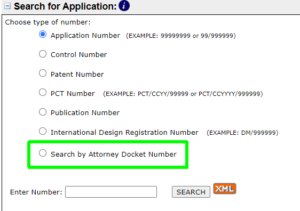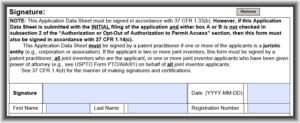Some readers are aware of a struggle that is going on right now between a group of Patentcenter beta testers and the people at the USPTO who are in charge of the design of Patentcenter. The Patentcenter beta users comprise a listserv.
The Patentcenter beta testers point to many bugs and missing features in Patentcenter that have been broken and missing since autumn of 2018 when alpha testing of Patentcenter began. They ask USPTO to communicate with the listserv. USPTO has refused to communicate with the listserv. See blog article How should USPTO interact with its Patentcenter beta testers?
USPTO has repeatedly said that there is no need for it to communicate directly with the listserv because its original alpha tester and beta tester feedback mechanisms are supposedly more than adequate. The three original mechanisms are:
- posting messages to USPTO’s Ideascale
- opening of trouble tickets at the USPTO Electronic Business Center, and
- sending email to eMod@USPTO.GOV.
None of these mechanisms works even remotely well, from the point of view of the alpha testers and beta testers. I personally have reported many Patentcenter bugs to the EBC since the start of alpha testing in autumn of 2018, and not once did I ever hear back from the EBC about whether any bug got fixed or how a trouble ticket somehow got closed.
There had been a point a few weeks ago at which it seemed the USPTO was on the verge of making it possible to have some actual direct communication between USPTO’s Patentcenter developers and the listserv. Since then, unfortunately, I have not heard further from the USPTO. Meanwhile, the Trouble Report list maintained by the listserv continues to grow, and the Feature Request list maintained by the listserv continues to grow.
So the natural question that arises is, what might we as USPTO customers do to help the USPTO to understand that it is actually in the USPTO’s interest to make time to communicate directly with the listserv? I realized that one possibility is that maybe the USPTO decisionmakers do not fully appreciate the depth of failure of the original three mechanisms in terms of getting bugs fixed and getting missing features implemented. Maybe if USPTO were to see an itemised report, listing one by one in an objective fashion, the many dozens of Patentcenter missing feature reports that were reported to the USPTO from autumn of 2018 to the present, that USPTO failed to implement? Maybe if USPTO were to see an itemised report, listing one by one in an objective fashion the many dozens of Patentcenter bug reports that were reported to the USPTO from autumn of 2018 to the present, that USPTO failed to fix?
The report would review bug reports and missing-feature reports that had been posted to Ideascale by alpha testers during alphatest. This is not easy to do because the USPTO has deleted those postings from public view — who can say why? I sent a FOIA request to USPTO and received a copy of all of my own alpha tester postings to Ideascale. If I were to make the time for it, I could work my way through the 75 pages of that document and itemize things. and generate some sort of report showing just how much of a failure the Ideascale mechanism has been in terms of getting Patentcenter bugs fixed and getting missing features implemented over the past 20 months. (You can see the 75-page FOIA response here.)
The other thing would be to review all of the Patentcenter alpha test and beta test problems that I reported to the EBC from autumn 2018 to the present. I have reported dozens of bugs to the EBC. EBC opened many trouble tickets. Not once has anybody from the EBC gotten back to me in response to even one of those trouble tickets. I made a FOIA request to the USPTO asking for documents indicative of the Patentcenter trouble reports that I reported to the EBC from autumn 2018 to now, and documents indicative of how the USPTO somehow closed those tickets or otherwise addressed them. I heard back from the USPTO FOIA office that if I want these documents, I will have to send them a check for $833.40. You can see the letter here. I’ve just sent them the check and I am looking forward to seeing the results, which I suppose will show up in a couple of weeks. If I were to make the time for it, I could work my way through those documents as well, after they arrive, generating some sort of report showing just how much of a failure the report-to-EBC mechanism has been in terms of getting Patentcenter bugs fixed and getting missing features implemented over the past 20 months.
But imagine a different next few weeks or months. Imagine a future in which the Patentcenter developers, in a reversal of the previous digging-in of heels, might actually choose to communicate directly with the listserv. This would permit my energies to go toward a goal shared by the USPTO and by the listserv — making Patentcenter better. I would much rather direct my energies that way, rather than directing my energies toward generating detailed objective reports showing the extent of failure of the old communications paths.





